Destination Moon
In 2014, the National Air & Space Museum announced that they would be renovating and redesigning their Milestones of Flight gallery. Some artifacts would undergo additional conservation, some artifacts would be moved into the gallery, and some artifacts would be moved to other galleries in the museum.
Columbia, the Apollo 11 command module which sat in the Milestones of Flight gallery since the museum opened in 1976, would be conserved and placed in another gallery. However, prior to the 50th anniversary of the moon landing, Columbia and a number of related artifacts would be sent on a nation-wide tour in the form of the "Destination Moon" travelling exhibit. One of the tour stops was the St. Louis Science Center, where I visited the exhibit.
After displaying it for nearly 40 years in the sun-drenched Milestones of Flight gallery, the Smithsonian decided that, to properly preserve the artifact, the command module could be displayed only in the very darkest of conditions. No camera flash or even cell phone LED flashlights would be allowed in the gallery during its tour. A museum staff member told me that it was forbidden for the museum to place a light to illuminate the command module's interior.
Although the Smithsonian itself first banned photographic tripods and then even monopods (ostensibly due to foot traffic safety concerns), the Smithsonian also banned tripods on the tour, rather than leaving such "safety concerns" to the individual museums who are much more familiar with their own foot traffic. These restrictions have the "unfortunate side effect" of preventing any sort of quality photographs from being taken. One can't help but wonder whether these restrictions are motivated by safety and preservation concerns or whether they are enforced to promote sales of the souvenir coffee table books in the giftshop ...
The St. Louis Science Center built upon the core Smithsonian artifacts to create quite an extensive exhibit. Outside the entrance to the gallery was a small 1960s downtown sidewalk with a few storefronts. One then walked through a 1960s-era living room which was decked out for a moon landing party, a small gallery featuring some exhibits regarding preparation for project Apollo, and a short segment of a swing arm before entering the gallery with Apollo 11 and the other artifacts. In addition to the Apollo-era artifacts, the Smithsonian artifacts include an F-1 injector recovered from the bottom of the Atlantic.
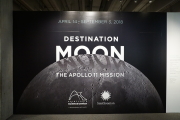 Destination Moon |
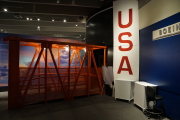 Swing Arm |
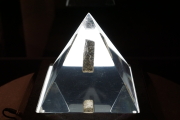 Moon Rock |
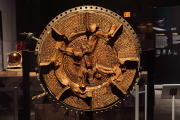 F-1 Engine Injector |
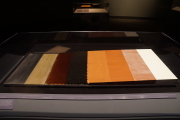 Apollo Heat Shield Manufacturing Model |
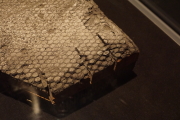 Apollo Heat Shield |
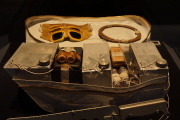 Apollo Survival Kit |
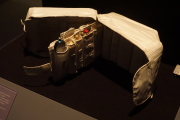 Apollo Medical Kit |
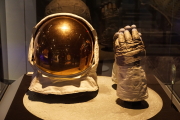 Aldrin Apollo 11 LEVA and Gloves |
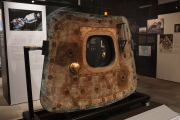 Apollo 11 Hatch |
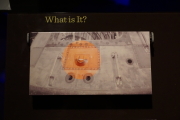 Apollo 11 "What Is It?" |
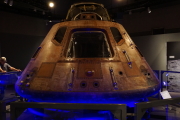 Apollo 11 |
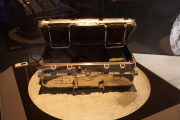 Apollo Lunar Sample Return Container |